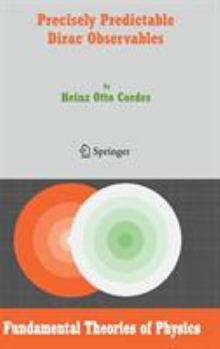Precisely Predictable Dirac Observables
Select Format
Select Condition 
Book Overview
In this book we are attempting to o'er a modi'cation of Dirac's theory of the electron we believe to be free of the usual paradoxa, so as perhaps to be acceptable as a clean quantum-mechanical treatment. While it seems to be a fact that the classical mechanics, from Newton to E- stein's theory of gravitation, o'ers a very rigorous concept, free of contradictions and able to accurately predict motion of a mass point, quantum mechanics, even in its simplest cases, does not seem to have this kind of clarity. Almost it seems that everyone of its fathers had his own wave equation. For the quantum mechanical 1-body problem (with vanishing potentials) let 1 us focus on 3 di'erent wave equations: (I) The Klein-Gordon equation 3 2 2 2 2 (1) ? ?/'t +(1 )? =0, ? = Laplacian = ? /?x . j 1 This equation may be written as ? ? (2) (?/?t'i 1 )(?/'t +i 1 )? =0 . Hereitmaybenotedthattheoperator1 hasawellde'nedpositive square root as unbounded self-adjoint positive operator of the Hilbert 2 3 spaceH = L (R ).
Format:Hardcover
Language:English
ISBN:B004I23XBY
ISBN13:9781402051685
Release Date:October 2006
Publisher:Springer
Weight:1.32 lbs.
Dimensions:0.3" x 6.1" x 9.3"
Customer Reviews
0 rating





